Newsletter #005 - Relation of learning and soft skills
From education to error culture to learning methods, here are my thoughts on these subjects and the role of soft skills within.

While browsing social media – for me, that's mainly LinkedIn – I repeatedly come across remarkable summaries of complex topics in infographics or sketch notes. These break fascinating facts, theories, methods, and wisdom into a minimum amount of information while memorably highlighting the core message. I've made it a habit to take screenshots of them and save them in my photo album, some of which have been there for over six years.
The review of my photo album has shown me the hidden treasures, and I'd like to share them with you. To this end, I've defined key topics I'll cover in upcoming newsletters. We'll start with why I took the screenshots in the first place – learning.
Education
When it comes to learning, school is the first thing that comes to mind. I reflect on my time being in school and compare it with the reports my children are giving me today. And fundamentally, nothing has changed. This means the discrepancy between school and work life in learning is as significant as ever. The following graphic illustrates this particularly well:
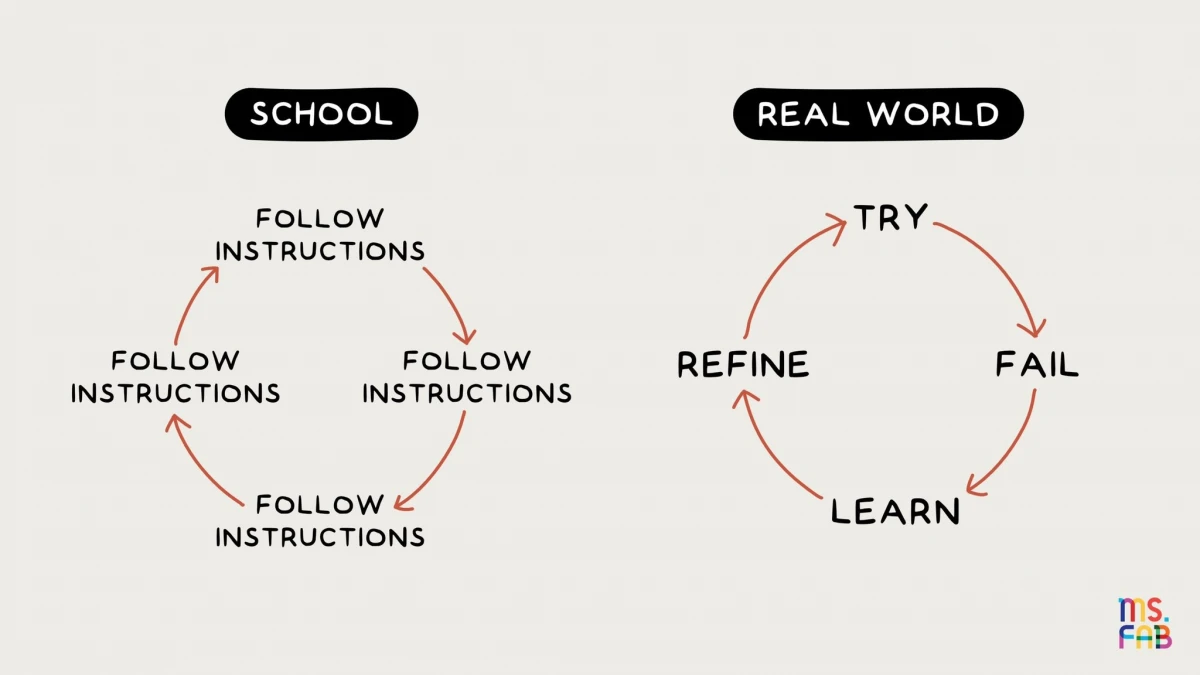
Credit: @https://afabrega.com
I expect my colleagues, partners, and teams to think and act independently. Agile teams should be "empowered." Children learn the opposite in school. In this YouTube short, Ms. Birkenbühl sums it up perfectly. How are children who have learned nothing other than to follow instructions supposed to suddenly act differently when they leave school?
Error Culture
In this context, the video touches on another topic: error culture. The graphic above illustrates this in the right-hand section: "Fail → Learn." It is well known that people learn best—and, in my opinion, only—when they make mistakes. If I repeat something without making mistakes, I delve deeper into it or let it become routine (necessary in competitive sports). This isn't real learning in the sense of "developing new skills."
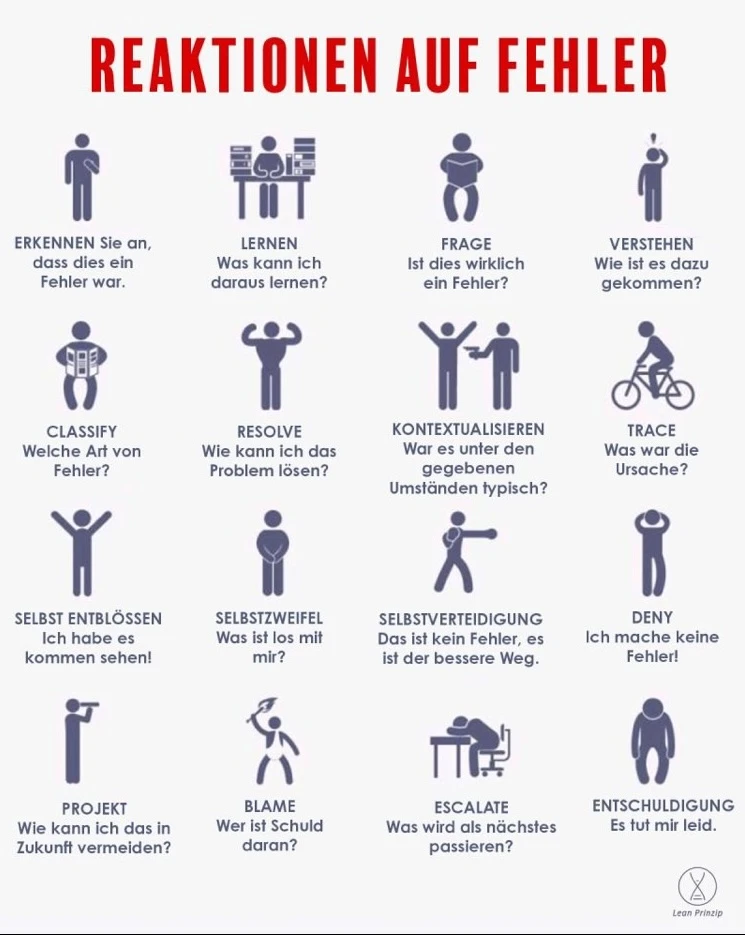
Source LinkedIn Article
This overview in German/English shows 16 possible reactions to mistakes. Some are solution-oriented (e.g., resolve, trace, or project), while others find their root in a toxic environment (e.g., blame, or deny). What all reactions have in common is that they are learned. And that's the good thing. We can and must teach our children how to deal with mistakes healthily, and we can also do this later in our work environment by being a role model and leading by a good example. In my opinion, this behavior—these soft skills—makes the difference in who I would like to work with.
Soft Skills
This thought leads to the question of what we should learn. What are our priorities? I've outlined my perspective in the section above, and I find my perspective reflected in the following list:
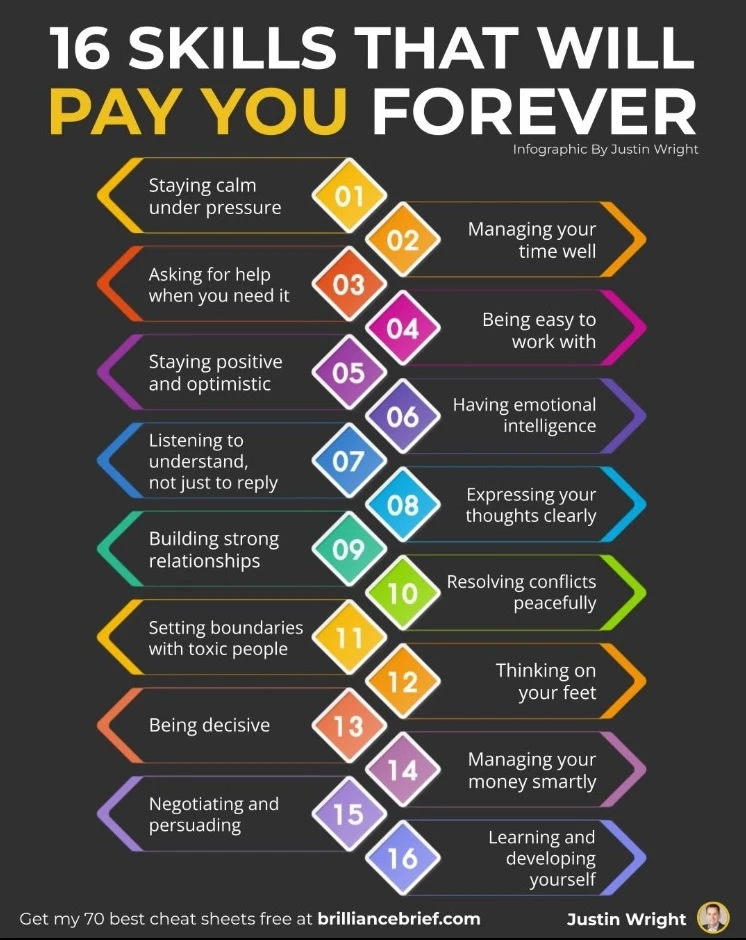
Source Instagram justinwrt
Of course, thanks to my hard skills, I'm an expert in one (or more) area. However, I'm convinced that my expertise is all the more valuable, the more developed my skills from the list are. At the very latest, when I change fields or take on a leadership position, the hard skills fade into the background, and the relevance of soft skills grows until it's all about soft skills. I'll explore this aspect in more detail in a later newsletter on leadership.
Personal Development
One thing is to know that soft skills are necessary and valuable; another is acquiring them – but where, and how, do I start? I've found a list of suitable book recommendations, TED Talks, and courses for this. Here, you'll find an ideal starting point on your learning journey:
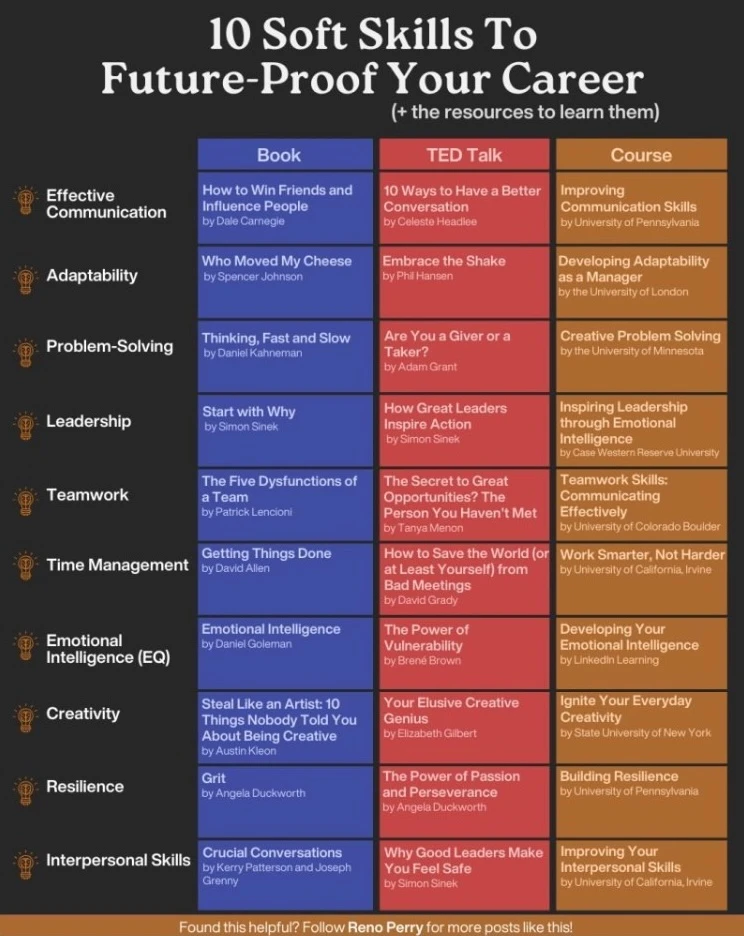
Source LinkedIn article by Reno Perry
Learning Methodology
This vast knowledge shouldn't just be studied once but recalled and applied over the long term. Applying it requires intensive engagement with the material – superficial, memorized, half-knowledge isn't enough. Fortunately, some methods suit each learning style and have proven effective for recalling knowledge. The following cheat sheet briefly summarizes the methods.
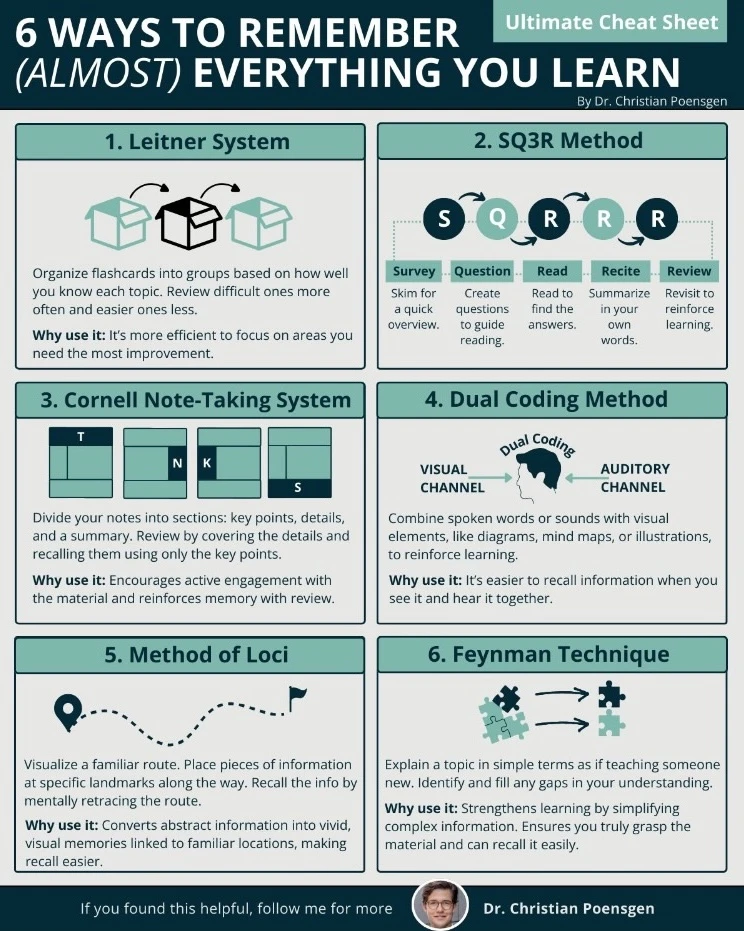
Source LinkedIn Article published by "Business Knowledge" credits to Dr. Christian Poensgen
Dunning-Kruger Effect
Awareness of the Dunning-Kruger Effect is essential when entering new subject areas. According to Wikipedia, this effect describes
the phenomenon whereby people with low competence tend to overestimate their abilities because they cannot recognize their shortcomings. The effect is named after psychologists David Dunning and Justin Kruger, who first described it in 1999
Anyone who has delved deeper into a topic is undoubtedly familiar with the crushing feeling of the valley of despair—the seemingly endless number of questions that arise from what has been learned. This is a good sign because it means that the initial peak has been reached and overcome.
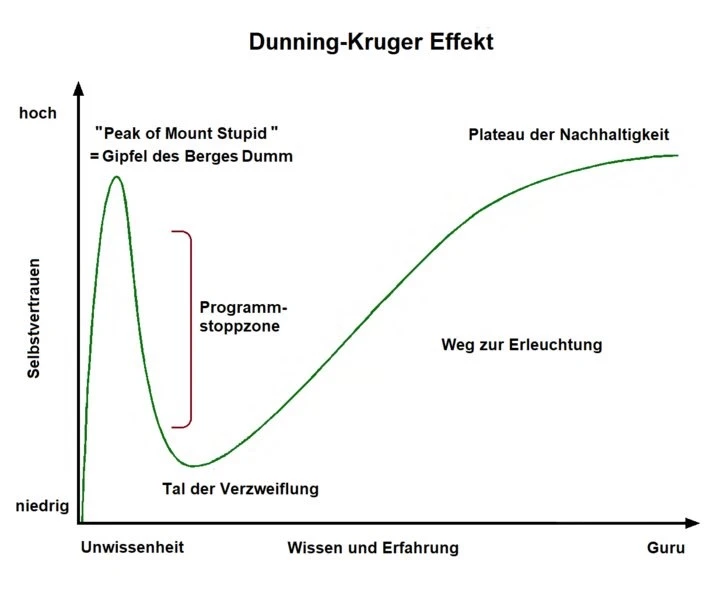
Conclusion
This excursion from the education system, error culture, and soft skills to learning methods shows how diverse the topic of "learning" is. Underlying everything are the soft skills that allow us to build effective teams and develop further in this environment. I want to conclude by stating where I began: the education system. The cartoon illustrates perfectly my impression of the system:
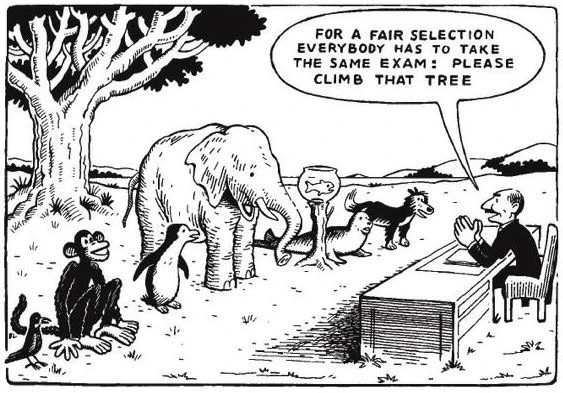
Autor: Hans Traxler (*1929), Quelle: betrifft : erziehung, Juli-Heft 1975
Next steps
Translating this into a technical team's workday is an entirely different challenge. I came across the Samman Method, which I would like to see in action.
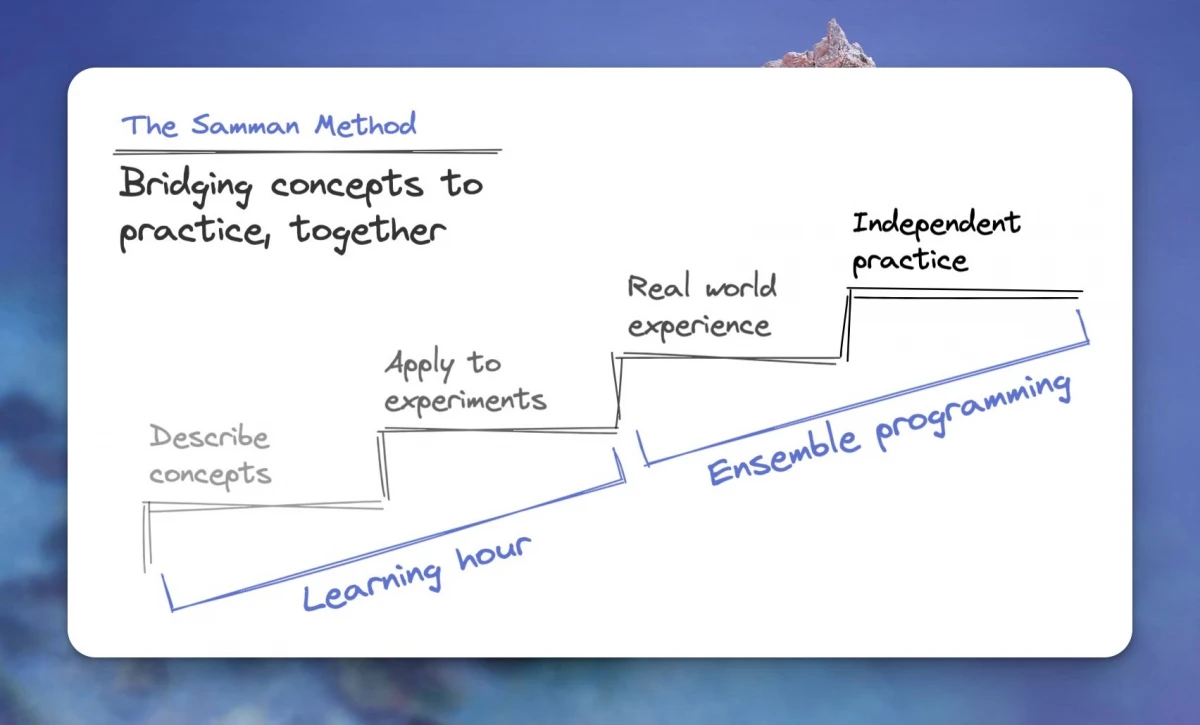
Source Typefully – Wisen Tanasa
In this approach, technical coaches work with software development teams to implement better coding practices. The focus is on iterative and incremental development practices – it sounds very exciting. If you have experience with this, please get in touch with me. I would love to know more about it.
Link Recommendations
Link 1: 4-Hour Workday - A Different Perspective
In the article The Minimalist Productivity System (6 Years Of Work In 6 Months), Dan Koe describes his approach to getting a lot done in a short amount of time. His core thesis is that peace and focus are prerequisites for practical work. Peace creates space to think and save work, and thus, according to him, reduces the effort from 6 years to 6 months. The article is provocative and, therefore, worth reading.
Link 2: Use Case for the Map Pattern in Typescript
The Medium article uses a clear Typescript example to show when the Map Pattern should be used instead of a fixed list of key-value values. The main goals are clean code, maintainability, and the open-closed principle.
Server Side Stories
Since the last newsletter, two more episodes of my podcast "Server Side Stories" have been released. You can find details here:
-
Episode 9: Our Kirby Dev Setup – Kirby is a flat-file CMS that is particularly characterized by its flexibility and speed. It stores content not in a database but in simple text files. I'll explain with Maurice why we often find Kirby the best choice for client projects.
-
Episode 10: Tailwindcss vs. CSS – Imagine being able to build a visually appealing website without ever writing a single line of CSS. That's precisely what Tailwindcss promises. But can it work? And what does this mean for traditional CSS approaches?
You can subscribe to the podcast on Spotify and Apple Podcast – the podcasts are German.
Forecast
In the first part of the series, I shared my perspective on learning. After we have acquired a lot of knowledge and trained our soft skills, the next step is either applying for our dream job or looking for colleagues for our own company – it's important to look at the job interview from the perspective of both an employee and an employer. More on this will be discussed in the mid-April newsletter.
Thank you for reading my newsletter.
All the best – Mark